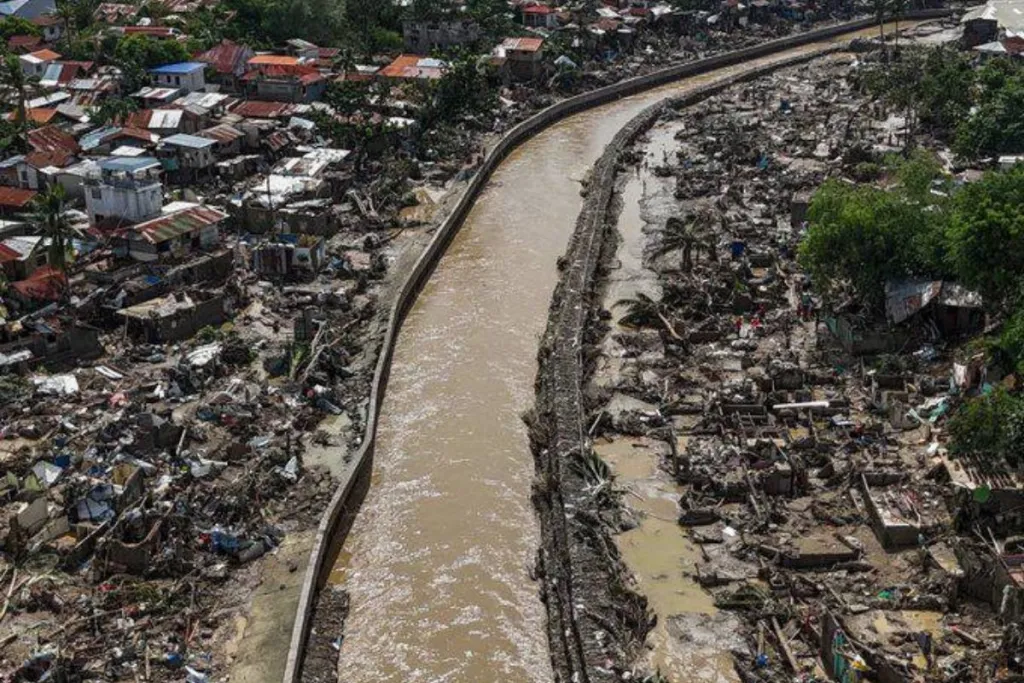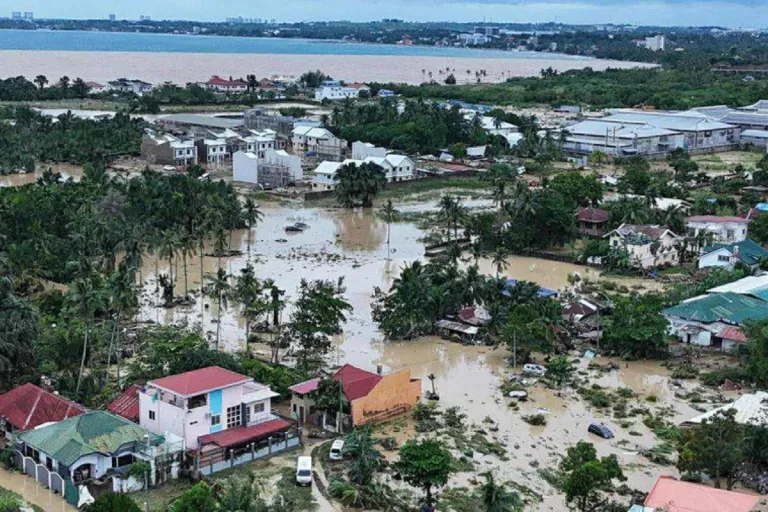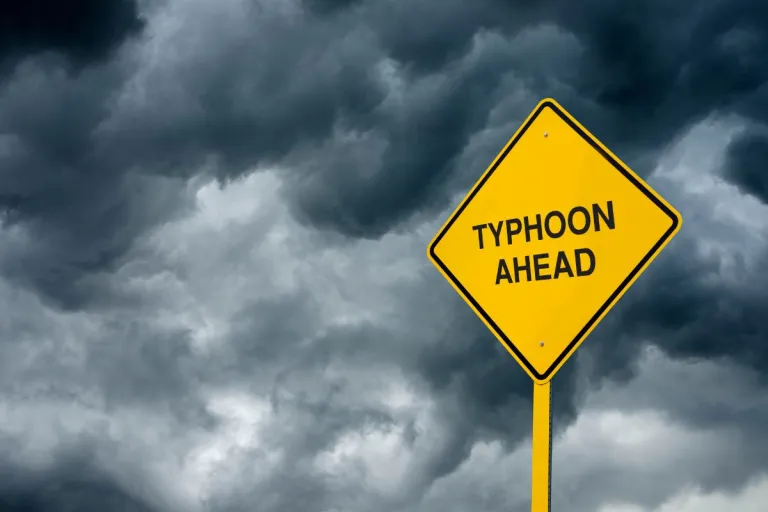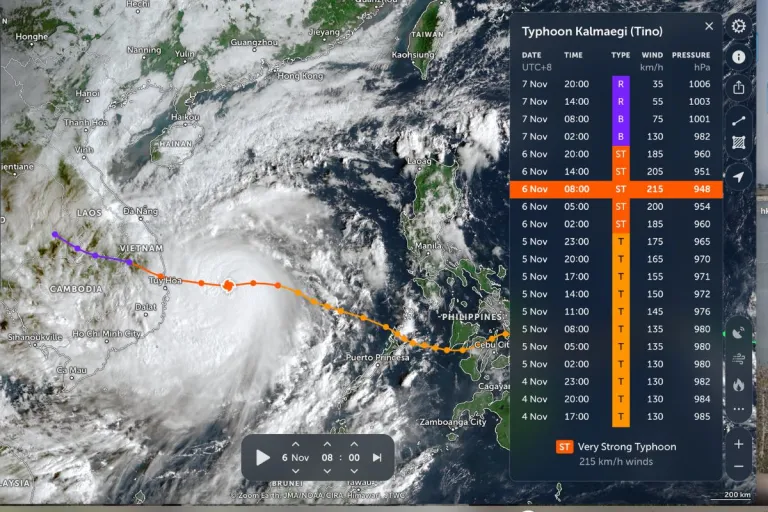Not just Boracay...
What Travellers Must Know About Typhoons Kalmaegi & Fung-Wong in the Philippines and Vietnam

Southeast Asia is once again facing nature’s fury. Within days, two powerful typhoons: Kalmaegi and Fung-Wong have swept through the Philippines and Vietnam, bringing fierce winds, heavy rain, and widespread devastation.
For travellers currently in the region or planning an upcoming trip, here’s what’s been happening and how to stay safe, informed, and travel smart during typhoon season.
The Philippines: Reeling from Kalmaegi, bracing for Fung-Wong

Image credit: Volcaholic | Official X
Just as the Philippines was beginning to recover from Typhoon Kalmaegi, another monster storm loomed offshore, Super Typhoon Fung-Wong (locally known as Uwan).
Kalmaegi tore through the country earlier this week, leaving at least 204 people dead, 109 missing, and over half a million displaced. Floodwaters submerged homes in Cebu and neighbouring provinces, forcing residents to seek shelter in evacuation centres. In many areas, survivors were seen mourning their loved ones in makeshift funeral halls.
President Ferdinand Marcos Jr. declared a state of national emergency and personally visited Cebu, saying that the sheer volume of rain had overwhelmed flood-control systems and caused rivers to overflow rapidly.

Image credit: Volcaholic | Official X
Then, as if one disaster wasn’t enough, Super Typhoon Fung-Wong approached from the Pacific with sustained winds of up to 185 kph (115 mph) and gusts reaching 230 kph (143 mph), the strongest storm to hit the country this year.
Authorities quickly evacuated more than a million residents from high-risk zones in Bicol and Aurora provinces. Flights were cancelled, ports were closed, and electricity was cut off in several eastern towns as a precaution.
With waves surging over three metres high, disaster officials warned of “life-threatening coastal flooding” across more than 20 provinces, including the capital region of Metro Manila.
Muslim-friendly tip: Travellers stranded at airports like NAIA (Manila) or Mactan-Cebu International Airport can find prayer rooms in both terminals and nearby halal-certified eateries such as Mujahid’s Kitchen and Arya Persian Restaurant for convenient meals while waiting out travel delays.
Vietnam: Kalmaegi’s trail of destruction

Image credit: PiNetWork HuavanCuong | Official X
As Kalmaegi exited the Philippines, it gained strength again over the South China Sea and made landfall in central Vietnam on 6 Nov 2025, packing destructive winds and torrential rain.
At least five people were killed, three others were missing, and around 2,800 homes were damaged or destroyed. More than 1.3 million people lost power as trees were uprooted, rooftops ripped apart, and roads blocked by debris.
Hard-hit areas like Gia Lai, Dak Lak, and Quy Nhon saw families taking refuge in shopping malls and schools, the few buildings still with backup power. Streets were filled with broken branches, twisted metal, and muddy floodwaters.
In coastal Quang Ngai, railway lines were damaged, delaying trains and causing cancellations. Domestic flights to and from Da Nang, Hue, and Quy Nhon were also grounded as authorities assessed the situation.
Muslim-friendly tip: For Muslim travellers currently in Vietnam, cities like Da Nang and Ho Chi Minh City have mosques and halal restaurants such as Nan N Kabab and Zaynab Restaurant that can serve as safe and convenient stops once weather conditions improve.
Travel disruptions across the region

Image credit: bauhaus1000 | Canva Pro
With two major storms hitting back-to-back, travel across Southeast Asia has been heavily affected.
Over 325 domestic and 61 international flights were cancelled in the Philippines.
Ports and ferry services remain closed due to rough seas, leaving 6,600 commuters and cargo workers stranded.
In Vietnam, train and flight services are slowly resuming, but power cuts and flooding still affect local transport and accommodation.
Travellers are advised to check with airlines, hotels, or local tourism offices before moving between destinations. For those with flexible itineraries, it’s best to delay non-essential travel until authorities confirm that conditions have stabilised.
Why is the region so vulnerable?

Image credit: zoom.earth | Official Website
Both the Philippines and Vietnam sit squarely in the Pacific typhoon belt, where warm ocean waters fuel intense storms between June and November.
Each year, the Philippines faces around 20 typhoons, while Vietnam sees around a dozen. Scientists warn that climate change is making these storms stronger and more frequent, with warmer sea temperatures intensifying rainfall and wind speeds.
Still, local communities continue to show remarkable resilience, rebuilding homes, repairing roads, and reopening tourist sites just weeks after each storm.
Travelling safely after the storm
For those planning future trips to the Philippines or Vietnam, patience and flexibility are key. Travellers are advised to monitor official weather advisories and embassy alerts, keep travel insurance that covers weather disruptions, and pack waterproof gear along with extra power banks. It’s also important to stay updated on the status of halal food outlets and mosques, especially in smaller towns where power or supply issues may persist.
Once the skies clear, both countries will welcome travellers back with open arms, offering everything from the lush rice terraces of northern Vietnam to the pristine beaches of Palawan. Even in the face of the fiercest storms, the warmth and hospitality of Southeast Asia remain unshaken, ensuring that travellers can soon enjoy the region’s beauty and vibrant culture.
Published at
About Author
Aimi Zulkiflee
Subscribe our Newsletter
Get our weekly tips and travel news!
Recommended Articles
10 Best Halal-Friendly Destinations in The Philippines for Muslim Travellers 10 Halal Logos in ASEAN That Every Muslim Traveller Needs to Know Look for these logos before you EAT!
10 Muslim-Friendly Airbnb in Manila, Philippines Travel more, worry less!
10 Things to Do in Dong Thap: Discover Vietnam’s Hidden Gem with a Muslim-Friendly Twist Famous for its lotus fields that symbolise the sacred flower of Buddhism!
13 Best Mosques Around The World Best Mosques Around The World – With so many mosques all over the world, most of those that we are used to seeing have the same architectural design, with minarets and other symbolic traditional elements. However, all around the world, the thought put into designing mosques are ever-changing – some with out-of-this-world creative outcomes, while […]
Latest Articles
11 Best Halal Food Spots in Kyoto: A Muslim Traveller’s Culinary Guide Hungry in Kyoto? Check out our curated list of the best restaurants for Muslim travellers.
Eat Well in Da Nang, 10 Halal and Muslim-Friendly Spots You Need to Try Your ultimate guide to finding the best Muslim-friendly dining spots, from local favorites to global tastes.
Independent Umrah Guide: How to Plan a Meaningful and Seamless Sacred Journey ollow this step for your Independent Umrah Guide
The Best Halal Food in Sydney: A Must-Visit Guide for Muslim Travelers A Must-Visit Guide for Muslim Travelers
8 Best Halal Fishball Noodle Spots in Singapore: From Hawker Gems to Michelin Stars Craving authentic fishball noodles? Check out our top picks for the best Halal-certified fishball spots across Singapore.

